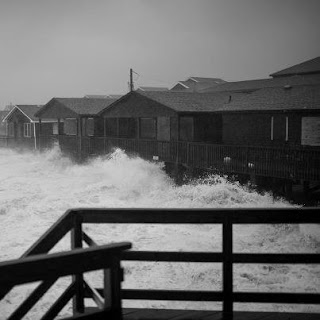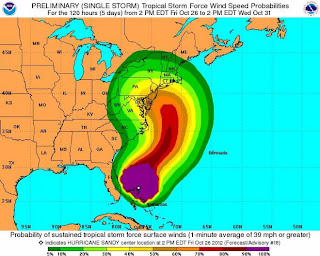Hi folks,
For this week's blog, we will be attempting to answer the un-answerable.
I LOVE when students ask me questions I don't immediately know the answer to. I spent the weekend researching and discussing two "un-answerable" questions and have some answers for you, as well as some resources to help you learn more. Then you will be delving into your own "impossible" research! Sounds like fun, right? I KNOW! Exciting!!
*I believe Aidan deserves credit for all three "unanswerable questions." I know you all have unanswerable questions (and that Aidan has even more)! Post your questions to "stump" me in the comments section below, please. I will choose interesting questions for a future "unanswerable questions" post!*
Un-answerable question #1 - "Can there be lightning during a snowstorm? Why/ why not?"
Well, this is something I had never thought about before. I initially thought it may not be possible, since there is less chance for the kind of contrasting fronts and sudden changes in the weather during the winter than in the summer. We also pondered the idea of friction in general, as it related to the static charges that create lightning.
As it turns out, this phenomenon DOES occur, BUT it is very, very rare!
First, some facts about lightning and thunderstorms:
* Lightning is a gigantic static electric charge.
* When we see lightning, we are actually seeing that charge heading back up into the sky.
* Thunder is the displaced air from the lightning rushing against our eardrums. This is why the sound of thunder is spaced out further from the actual lightning strike, the further away the storm is - it takes longer for that moving air to reach your eardrums!!
*The clouds we see before a thunderstorm are known as "cumulonimbus" clouds. They are very large and dark because they are very, very dense with moisture.
*Thunderstorms occur when a warm air mass and a cold air mass meet. Low pressure systems are also necessary.
Now, on to the fascinating phenomena known as "thundersnow!"
The best explanation of thundersnow, which I have copied below, comes from this website:
http://news.nationalgeographic.com/news/2009/03/090303-thunder-snow-storm.html
"Thundersnow—when thunder and lighting occur during a snowstorm—most often appears in late winter or early spring, experts say.
That's because the ingredients for thundersnow—a mass of cold air on top of warm, plus moist air closer to the ground—often come together during that time.
What Causes Thundersnow
Thundersnow starts out like a summer thunderstorm, Market said. The sun heats the ground and pushes masses of warm, moist air upward, creating unstable air columns.
As it rises, the moisture condenses to form clouds, which are jostled by internal turbulence.
The "tricky part" for making thundersnow, Market said, is creating that atmospheric instability in the wintertime.
For thundersnow to occur, the air layer closer to the ground has to be warmer than the layers above, but still cold enough to create snow—a very precise circumstance.
In the recent southern U.S. thundersnow storms, for instance, the atmosphere became unstable enough that thunderstorms with rain developed. Those storms then moved north where the air was below freezing, said Howard Silverman, a National Weather Service senior forecaster in Sterling, Virginia.
The thundersnow events were also coupled with "pretty decent snowfall rates," at the rapid clip of more than two inches (five centimeters) an hour, Silverman said.
Heavier snowfall is usually linked to thundersnow, both experts agreed."
So, to summarize, thunderstorms are far more likely in the summer because the collision of cold and warm air masses are much more likely in the summer. Moist air closer to the ground is much more likely in summer, as well, for a variety of reasons: moist air close to the ground usually comes from dew evaporating off the ground - warmer air is necessary for this. Warmer air also holds more moisture, so very humid days are far more likely in the summer.
It's also interesting to note that even though lightning IS present (remember, that's what MAKES the sound of thunder), you probably won't see the lightning in the thundersnowstorm:
"Experiencing thundersnow requires being in the right place at the right time, said University of Missouri atmospheric scientist Patrick Market, who has received funding from the National Geographic Society's Expeditions Council. (The National Geographic Society owns National Geographic News.)
Even then, he said, you probably won't see anything but white.
"In a really nice thundersnow event, the sky [simply] gets bright. You don't see a lightning bolt. There's nothing for a second or two, and then you hear a rumble of thunder."
Cool, huh?
Here are a few more resources about thundersnow:
Un-Answerable Question #2: Are there fossils in Antarctica?
We've had quite a bit of discussion about antarctica lately, and the differences and similarities between it and the "true" tundra up north. As we know it, Antarctica has no plant life, no summer, no thawing - it is inhabited by very, very few organisms. So... was there prehistoric life in Antarctica?
I learned the answer to this partly through an episode of "Walking with Dinosaurs" that Jack recently watched (I believe it is the 5th episode, and it is available on Netflix, for those of you who are interested).
YES! There was, in fact, prehistoric life on Antarctica.
Of course, you have to understand that Antarctica was once part of the megacontinent we call Gondwana, and the life was there before it floated down to it's current location at the south pole. At one point in time, it's location relative to the South Pole was more like the northern tundra's location relative to the North Pole, allowing it to sustain life. Remember from our Mystery Class investigation last year, that while the true Poles have 24 hours of night in their "winters" and 24 hours of light in their "summers" and are ALWAYS cold, there is much more seasonal variation just a few latitudes away. Take Northern Canada's tundra, taiga and boreal forest, for example, or the southern tips of South America and Africa - stuff lives in those places, with diversity of both animal and plant life. The climate was also VERY different in prehistoric times, so everything was warmer - making the climate of Antarctica in its very earliest days even more livable. Scientists think that the climate at one point was even temperate, allowing Antarctica to have lush, green forests. WOW!
Of course, the permanently frozen ground in Antarctica makes it extremely difficult to learn very much about the fossilized remains that can be found there.
They have, however, found quite a range of fossils around the outer edges of Antarctica, including fossils of sea dinosaurs such as this plesiosaur:
Here are some resources to learn more about this:
Unanswerable Question #3: How can Phineas get his shirt over his head?
Well.... I don't have an answer for that one yet! It looks pretty impossible.
However, let's investigate!
Your blog assignment for this week involves TWO tasks.
One is to answer questions based on this blog entry (you will/ did receive this set of questions on Monday, November 19, and they are due when you return from Thanksgiving Break, Monday, November 26)
AND
Using a triangle and circle that you cut from paper, test this:
*How much bigger can a triangle be than a circle and STILL be able to pass through the circle? Can it be bigger at all? Should we fold it? Can Phineas fold his head? He is, in fact, a cartoon - and they are 2-dimensional*
Hmm... I wonder what we will find....
Happy investigating, guys!









+cute.jpg)




































